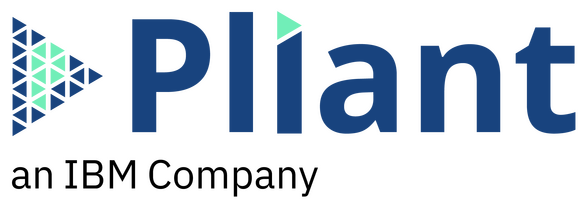Occasionally when new technologies are introduced to existing systems, they don’t mesh quite the way you thought they would. Trying to get everything synced and running smoothly can be a major headache. 😣
At Pliant, we’re all about making things easier for you. We don’t want you to have to start from scratch, throw out perfectly good workflows, or relearn everything just because something new is out there. Our mindset is to refine and improve what you already have—not throw out and replace.
With that said, we’re excited to announce we’ve taken a big step in that direction by adding native YAML support to our powerful orchestration platform.
This means you can keep using your Ansible playbooks, but with the added full flexibility our platform offers. And if you’re new to Pliant, you now have access to the easy-to-read YAML text representation.
The goal is to grant you better efficiency and flexibility. Whether you’re new to YAML, Pliant, or both, it’s time to open the doors to a new way of orchestration. ⬇️
A Brief History of YAML
YAML is an interesting word. It stands for “YAML Ain’t Markup Language.” It was first proposed by Clark Evans all the way back in 2001.
He wanted to create a format that was not only useful but easy to read or write for data serialization and configuration files. Evans worked with Igny döt Net and Oren Ben-Kiki to develop the YAML specification, which they first published in early 2002.
YAML was designed to be super user-friendly. Its syntax is more natural and intuitive than formats like XML or JSON—which is what we first used on our platform. The YAML founders took inspiration from Python’s syntax for lists and dictionaries and Perl’s syntax for expressions to bring together the best of both worlds. 🌎
Nowadays, YAML is a really popular choice for configuration files in web development, DevOps, and other areas where human or machine-readable data exchange is important. Some popular tools that utilize YAML are Kubernetes, Docker, Ansible, and now, Pliant.
It’s supported by many programming languages and frameworks as well. It has a growing community of users and contributors who are always working to make it better. That’s why we are thrilled to bring its capabilities to existing Pliant users, as well as current YAML users on other platforms. Now, anyone can leverage all the capabilities our platform offers without throwing away your pre-existing workflows. 😁
Why Did We Integrate YAML?
In short, Ansible is a really helpful tool that lets you set up and manage your infrastructure in a clear, organized way.
Over the years, we’ve heard from many of our customers who use Ansible daily. The general consensus was they wanted more flexibility with our platform’s ease of use. Previously, it was largely one or the other—not both.
We wanted to end this divide. That’s why we turned to a YAML integration solution.
It’s a simple and easy-to-read way of representing data, which is also beneficial to our current customers. It lets users create a workflow that can include an Ansible playbook without too much hassle on their part. This helps you achieve your goals more easily and quickly with this new native integration.
Now Ansible users have access to Pliant’s orchestration platform to:
- Automate workflows
- Integrate applications
- Connect the entire tech stack
And the best part for you if you’re an Ansible user? You don’t need to start from scratch. You can easily transfer your playbooks onto our platform to keep building, integrating, and expanding your projects. 💯
➡️ Read the full YAML data sheet here.
See YAML In Action on the Pliant Platform
In our most recent YouTube video, our VP of Marketing Chris Rohter had a chat with our Founder and CEO Vess Bakalov, about what the future holds for orchestration capabilities on the Pliant platform with YAML integration. 🎥
You’ll see the Pliant platform live in action with the newly integrated YAML representation. This episode is a great way to get some ideas as to how you can integrate and orchestrate your existing workflows within our platform.
Oh, and while you’re there, don’t forget to subscribe to our channel to ensure you stay updated on our latest integrations. 😉
➡️ Check out the latest episode here.
Final Thoughts
From the start, we’ve designed our platform to be simple to use, with powerful technology operating it. Use our low-code drag-and-drop action blocks to build workflows—whether basic or complex—to meet your specific needs.
And now, with native YAML support, you can seamlessly integrate your existing playbooks with imperative workflows. No starting from scratch. No tossing your hard work. No complicated rework. 🚫
Instead, get to work building on top of what you already have in place—and make it even better. Learn more about our new integration, or if you’re new to Pliant, give our free community edition a spin to see what Pliant orchestration can do for you.
